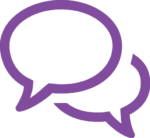
When you consider the ideal work atmosphere, what comes to mind?
Is it a quiet office space where you can sit down and focus with no interruptions? Or an open environment where you can connect with colleagues before getting down to business? As many of us shift to new work situations amidst the COVID-19 pandemic, we also need to consider how this may look in our homes.
Perhaps it’s less about workspace and more about how you get to do your work. Do you prefer to receive detailed action plans so you can chip away at your tasks or broad strokes about a project so you can chart your own course?
Each of us prefers to work differently, so while there isn’t just one approach to productivity, you can help your team be more effective by using the Emergenetics® Attributes to create an atmosphere and provide the resources that appeal to all employees, whether in person or remotely.
How Can We Work Most Productively Considering the Attributes?
As a manager or team member, one of the best things you can do for your employees’ and colleagues’ productivity is to honor the platinum rule, which is to treat others the way they want to be treated.
By empowering employees to work in a way that respects their Thinking and Behavioral preferences, you can positively impact your team’s motivation and productivity.
 Employees with a preference for Convergent thought (the combination of Analytical and Structural Thinking) may be at their most productive when they have:
Employees with a preference for Convergent thought (the combination of Analytical and Structural Thinking) may be at their most productive when they have:
- A defined objective and plan of action
- Clarity around their specific role and expectations
- An opportunity to dive right into the work
Convergent thinkers also typically appreciate a work environment where they have their own office or cubicle space so they can remain focused. When working remotely, it is helpful to have a quiet space dedicated to work.
 Divergent thinkers (with Social and Conceptual preferences) are usually most effective when they have:
Divergent thinkers (with Social and Conceptual preferences) are usually most effective when they have:
- A general sense of direction
- Freedom to complete a task on their own time
- An opportunity for conversation and connection before sitting down to work
Individuals with this preference often prefer open office spaces and a chance to vary where they work – whether that’s outside or in a different part of the office. When working from home, they will likely appreciate the use of video calls to stay engaged.
 Those with a preference for Abstract Thinking (the combination of Analytical and Conceptual Thinking) typically are at their best when they:
Those with a preference for Abstract Thinking (the combination of Analytical and Conceptual Thinking) typically are at their best when they:
- Understand the high-level purpose and direction behind a project
- Are free to approach an assignment in their own way
- Feel that their expertise is recognized
Whether in the office or at home, Abstract thinkers appreciate an uncluttered work space and an opportunity for uninterrupted work time once they have started getting down to business.
 Concrete thinkers (or those with Structural and Social preferences) may be most productive when provided with:
Concrete thinkers (or those with Structural and Social preferences) may be most productive when provided with:
- Specific guidelines and parameters
- Examples of the desire outcomes
- Defined resources to use or individuals to check in with for questions
Concrete thinkers may appreciate an open office environment so they can connect with others and they may prefer to schedule dedicated time to connect about work priorities. When working remotely, they may enjoy interacting through scheduled phone or video meetings.
 Expressiveness: Consider this Attribute in relation to communication methods and office setup. For example, those with a preference for first-third Expressiveness may prefer quiet space and email over meetings, while those in the third-third of Expressiveness often enjoy open office spaces and are eager for face-to-face meetings and video calls.
Expressiveness: Consider this Attribute in relation to communication methods and office setup. For example, those with a preference for first-third Expressiveness may prefer quiet space and email over meetings, while those in the third-third of Expressiveness often enjoy open office spaces and are eager for face-to-face meetings and video calls.
![]() Assertiveness: Vary the pace of your interactions with those in your team as those in the first-third of Assertiveness are energized by a steady pace and want to take time to build consensus before work begins. Third-third Assertiveness may be more inclined to jump into work without pausing to consider the implications to others.
Assertiveness: Vary the pace of your interactions with those in your team as those in the first-third of Assertiveness are energized by a steady pace and want to take time to build consensus before work begins. Third-third Assertiveness may be more inclined to jump into work without pausing to consider the implications to others.
![]() Flexibility: While there are studies suggesting that multi-tasking is unproductive, it is truly motivating to some – and a distraction to others. Those in the first-third of Flexibility gain energy the closer they are to finishing a task. Provide them with quiet space and an opportunity to focus as they close out projects. Those with a preference for third-third Flexibility prefer to work on many projects simultaneously and may appreciate interruptions throughout their day.
Flexibility: While there are studies suggesting that multi-tasking is unproductive, it is truly motivating to some – and a distraction to others. Those in the first-third of Flexibility gain energy the closer they are to finishing a task. Provide them with quiet space and an opportunity to focus as they close out projects. Those with a preference for third-third Flexibility prefer to work on many projects simultaneously and may appreciate interruptions throughout their day.
Best Practices to Support Team Productivity
Your Emergenetics preferences likely impact your ideal work environment – both in terms of physical space and the parameters you need to get your job done productively.
To help your teams be most successful, I recommend the following next steps:
1. Ask Team Members How They Prefer to Work
There is a lot to take away from a discussion of the Attributes, and certain practices may resonate more than others with your colleagues. By having open conversations, you can identify patterns and practices that can help you all be more effective in working together.
2. Establish Team Norms
Once you identified individual areas of focus, consider what broader norms you can create to set your team up for success.
Perhaps you’ll want to define rules around dedicated work time, when to meet in person or through video versus send an email or how to bring a cognitively diverse approach to work so all Attributes are engaged.
Identify a list of three to five guidelines and review them on a monthly basis to understand if they are working or could be improved.
3. Update Workspaces to Reflect the Attributes
While this project may involve your whole organization, it’s helpful to think about how you can establish office spaces that support productivity for all preferences. Consider how you might incorporate the following:
- Comfortable spaces like breakrooms or coffee rooms so employees can connect as well as libraries or sitting rooms that are intended for quiet and concentration
- Huddle rooms for conversations between a couple of colleagues
- Spaces that employees can call their own – whether that’s a within your office space or a remote workstation that your company invests in
- Access to natural light and outdoor spaces
- Opportunities to work from home
If your organization has moved to a remote work model, sharing these suggestions may help your team members generate creative solutions for their own spaces. Whether in an office space or home, your workplace environment will affect your overall output. By reflecting on the needs of all seven Emergenetics’ Attributes, you can identify the rules of engagement that will empower teams to work effectively and productively.
Help your employees gain awareness of their Emergenetics preferences so they can advocate for their needs and support their own productivity. Discover how you can build greater self-awareness in your organization by filling out the form below to speak with our team today.
 Print This Post
Print This Post
